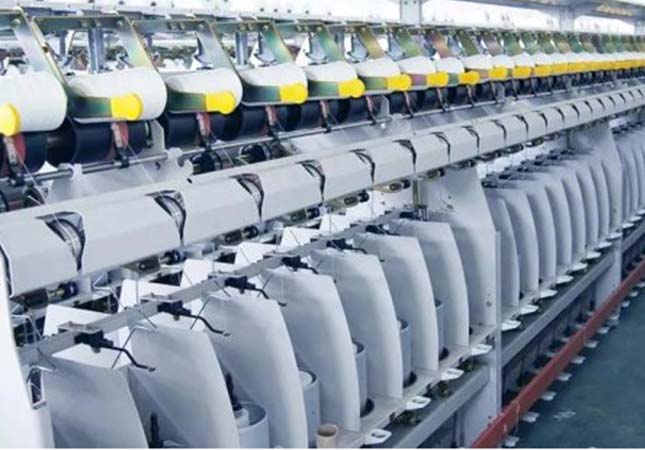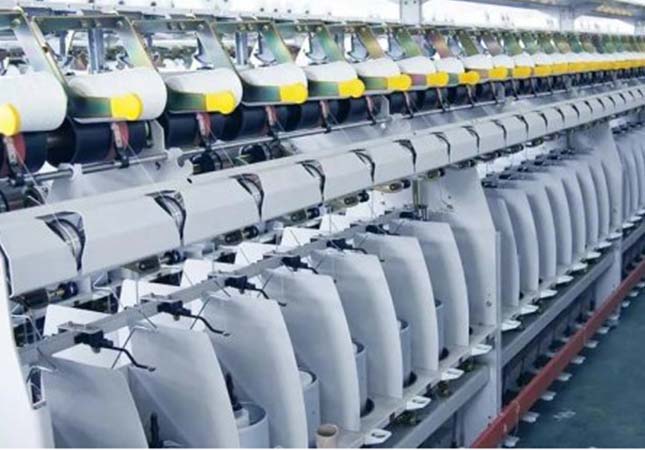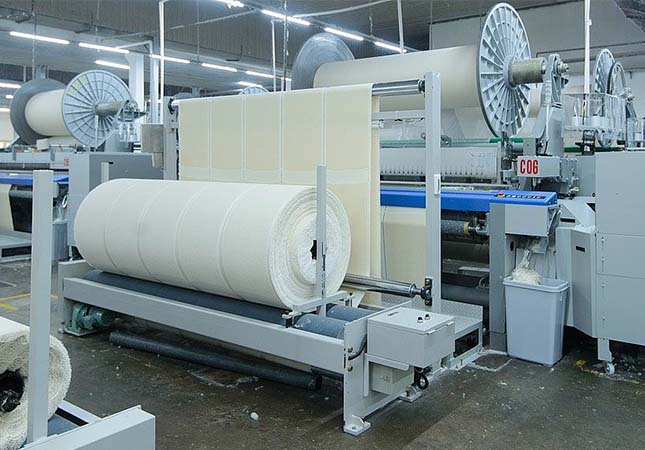AI has become a crucial factor that sets businesses apart, as it has countless applications across various domains. Whether it's self-driving vehicles or textile inspection like SUNTECH textile machinery, AI plays a fundamental role in enabling cutting-edge services that are revolutionizing our daily lives. As smart textiles continue to gain popularity, they are fueling a revolution of industry 4.0 in the textiles industry. Once fabrics technology become intelligent, it would be hard to go back to the traditional "dumb" fabrics. This presents a significant opportunity for both established and emerging textile companies to advance. With AI serving as the driving force behind smart textiles, wearable technology like AI fabric inspection may become outdated.
Research on AI fabric inspection of Great Significance
AI fabric inspection is an application of artificial intelligence that involves the use of computer vision to automatically inspect and analyze fabric quality. This technology is useful in the textile industry, where fabric quality control is critical to ensuring the final product meets the required standards.

There has been a significant amount of research on AI fabric inspection. Some of the key areas of focus include:
1. Image processing techniques
Researchers have developed algorithms and techniques to preprocess and enhance fabric images to improve the accuracy of defect detection.
2. Machine learning algorithms
Various machine learning algorithms, such as Support Vector Machines (SVMs), Neural Networks, and Random Forests, have been used to classify and detect defects in fabric images.
3. Data-set creation
Creating a high-quality data-set is crucial for the success of any machine learning model. Researchers have developed various methods for creating annotated fabric images datasets, including manual annotation and semi-automatic methods.
4. Feature extraction
Feature extraction is a critical step in fabric inspection, where the key features of a fabric image are extracted to detect defects. Researchers have developed various feature extraction methods, including texture-based features, statistical features, and transform-based features.
5. Deep learning models
Deep learning models, such as Convolutional Neural Networks (CNNs), have been increasingly used for fabric inspection due to their ability to learn complex features and patterns from large datasets.
Representative Research Results on AI Fabric Inspection

"Automated Fabric Defect Detection and Classification Using Convolutional Neural Network"
The "Automated Fabric Defect Detection and Classification Using Convolutional Neural Network" is a research paper authored by Gargi Sharma and Dinesh Goyal. The paper proposes a novel approach for fabric defect detection and classification using Convolutional Neural Networks (CNNs), a type of deep learning model.
The primary objective of the research is to develop an automated system that can accurately detect and classify fabric defects, which is a critical task in the textile industry. Traditional fabric inspection methods rely on human inspection, which is time-consuming, labor-intensive, and prone to errors. The proposed system aims to address these challenges by using computer vision and deep learning technologies to automate the process.
The proposed approach consists of three stages: image preprocessing, feature extraction, and defect classification. In the image preprocessing stage, the fabric images are normalized, resized, and converted to grayscale to improve the accuracy of the defect detection algorithm. In the feature extraction stage, features such as edges, corners, and texture are extracted from the fabric images. Finally, in the defect classification stage, a CNN model is used to classify the defects based on their type and severity.
To evaluate the performance of the proposed approach, the authors conducted experiments on a publicly available fabric defect dataset. The results of the experiments showed that the proposed system achieved high accuracy rates for both defect detection and classification. The CNN model was able to classify defects with an accuracy of over 99%, which is significantly better than traditional methods.
Overall, the "Automated Fabric Defect Detection and Classification Using Convolutional Neural Network" paper presents a promising approach for automating fabric defect detection and classification. The use of deep learning and computer vision technologies could significantly improve the efficiency and accuracy of fabric inspection, reducing the cost and time associated with manual inspection.
"Real-time Fabric Defect Detection Using Deep Learning Techniques" by Xiaodan Liang, Xiaofeng Liu, and Guoxian Dai
"Real-time Fabric Defect Detection Using Deep Learning Techniques" is a research paper authored by Xiaodan Liang, Xiaofeng Liu, and Guoxian Dai. The paper presents a deep learning-based approach for real-time fabric defect detection, which is a crucial task in the textile industry.
The proposed approach consists of two stages: feature extraction and defect detection. In the feature extraction stage, the authors used a pre-trained convolutional neural network (CNN) to extract features from the fabric images. The CNN model used in the research is ResNet-50, which is a popular deep learning architecture known for its excellent performance in image recognition tasks.
In the defect detection stage, the authors used a support vector machine (SVM) classifier to classify the extracted features as either defective or non-defective. The SVM classifier was trained on a dataset of fabric images with labeled defects.
The proposed approach was evaluated on a dataset of fabric images with various types of defects, including holes, stains, and scratches. The results of the experiments showed that the proposed approach achieved high accuracy rates for both defect detection and classification. The approach was also able to process images in real-time, making it suitable for use in manufacturing settings.
The research presented in the "Real-time Fabric Defect Detection Using Deep Learning Techniques" paper has several potential applications in the textile industry. The proposed approach could significantly improve the efficiency and accuracy of fabric inspection, reducing the cost and time associated with manual inspection. The real-time processing capability of the approach also makes it suitable for use in high-speed manufacturing environments.
SUNTECH AI Fabric Inspection Technology
SUNTECH is a leading textile machinery manufacturer that has made significant strides in the development of AI fabric inspection machines. SUNTECH’s latest innovation, the ST-Thinkor, offers advanced AI inspection technology by equipping a visual camera inspection system for fabric defect detection. ST-Thinkor is a flagship product, having compatibility with a wide range of fabric inspection machines, and ability of inspecting various types of fabrics, from delicate lycra fabrics to sturdy woven fabrics.
ST-Thinkor in the mean time achieves AI fabric inspection to the real manufacturing, for fabric defects can be promptly identified and recorded, with all information synchronously uploaded to the software and computer. This facilitates 24-hour unmanned testing, improving the efficiency and accuracy of fabric inspection.

Conclusion
Overall, AI fabric inspection is an active area of research, and with the advances in computer vision and deep learning, we can expect to see more accurate and efficient fabric inspection systems in the future. If you are interested in SUNTECH and ST-Thinkor, don’t hesitate to click on our official website!
https://www.suntech-machine.com/product/st-aci-automatic-camera-inspection-system-152.html
https://suntech-machine.com/category/automatic-camera-inspection-system-55.html




